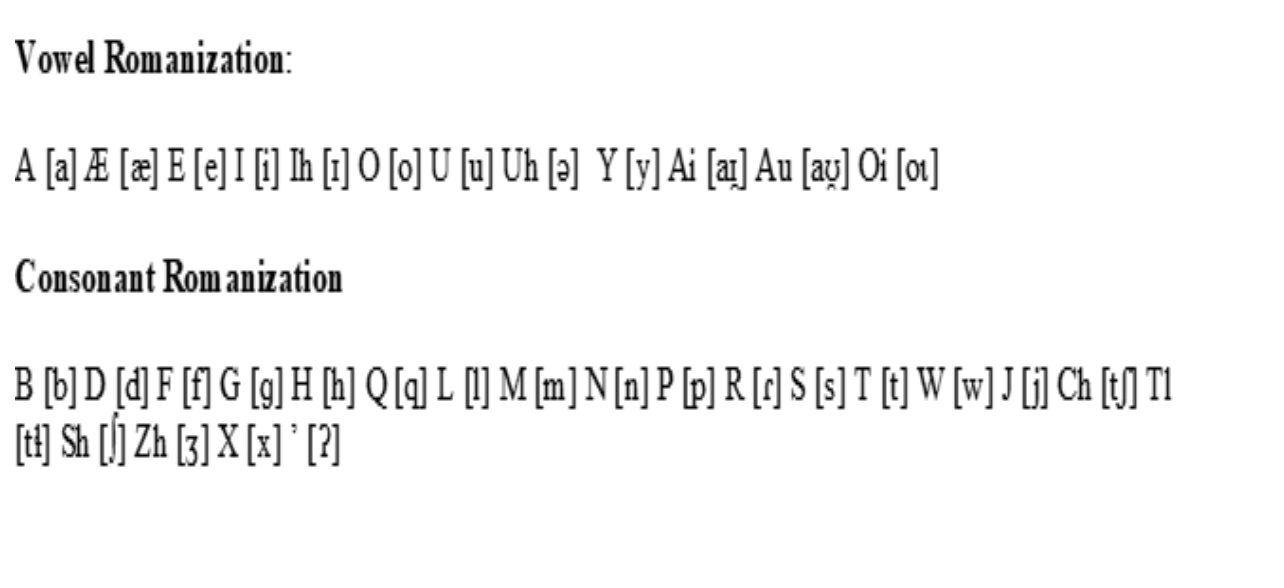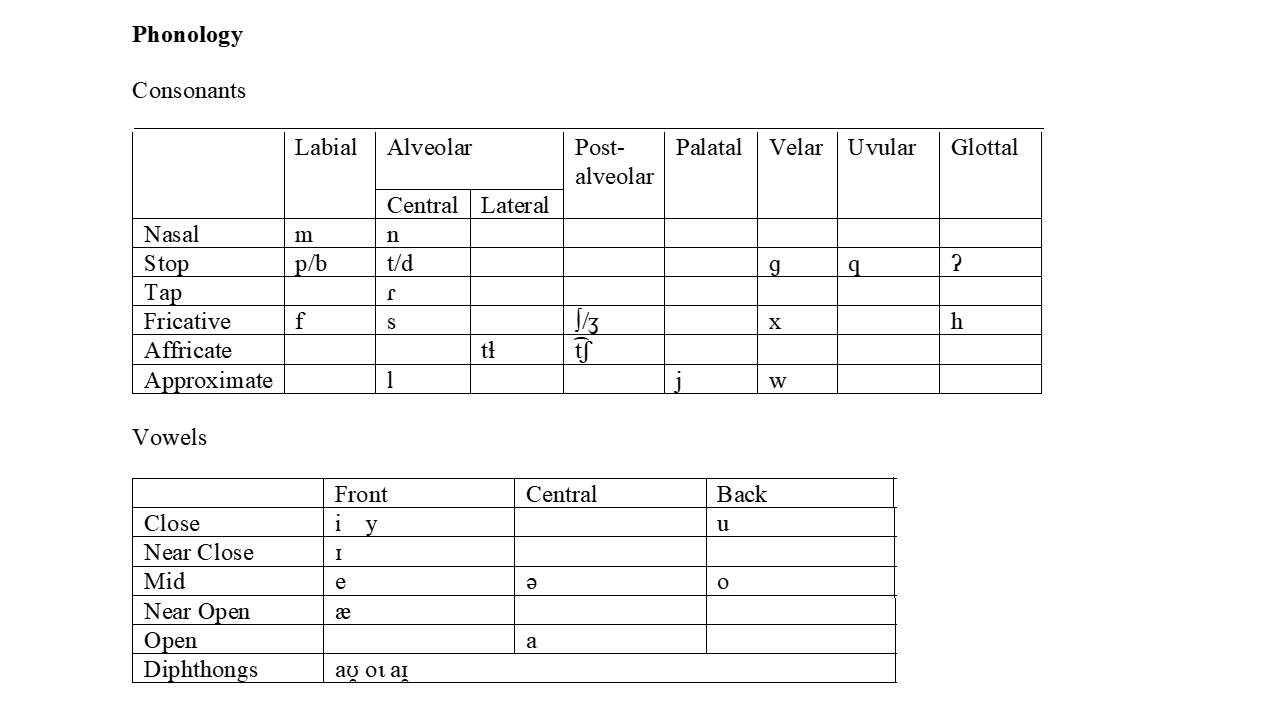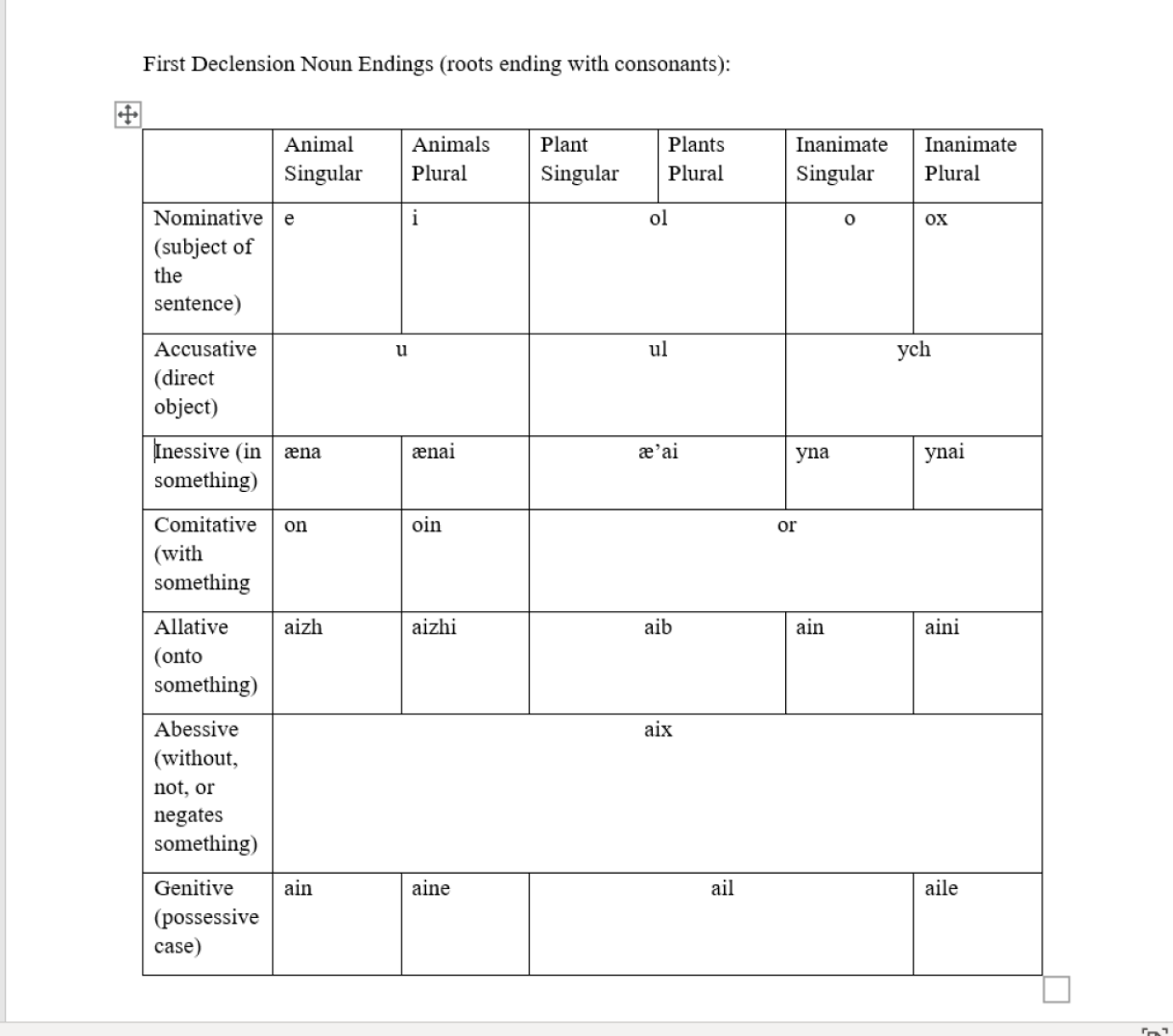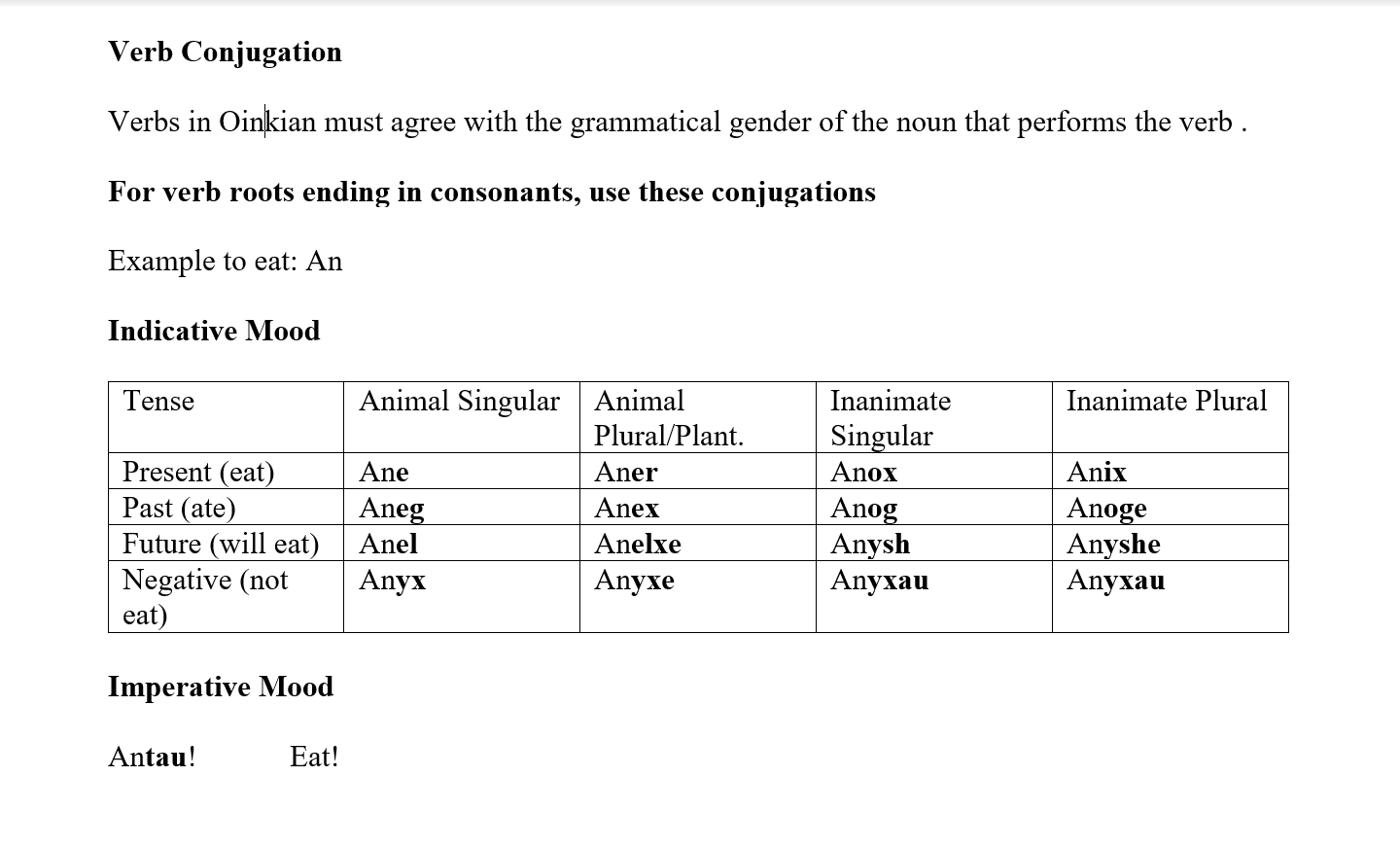Oinkian Language
Oinkian speakers are hunter gatherer peoples who worship javelinas. (Yes that's a real animal you can find in south Texas and Arizona.) In the world of Oinkian, there are giant javelinas, the holiest animal to Oinkian speakers. This explains the frequent use of javelinas, or collared peccaries in their vocabulary.
Writing System
Morphology
The word order is: Subject, Verb, Object. However, this is mostly conventional, and not required in all sentences because the nominative and accusative cases can determine the subjects and direct objects.
Nouns have seven cases with three grammatical genders: animals, plants and inanimate. Nouns are declined by their case, number and gender through suffixing. The plant gender has no number; a tree or multiple trees aren’t distinguished, like the English words “fish” or “bison,” both of which could be singular or plural.
The nominative always refers to the subject of the sentence, the accusative for the direct object. For example: I petted the dog. Ine fome wuhnuhti. Ine, or I, is nominative first declension, with the wuhnuhti, or dog is the second declension accusative ti.
The abessive case indicates the nonexistence or negation of a noun. The meadow has no fox, in Oinkian reads: Ymanol qaufaxi. Qaufaxi is fox, or “foxless.”
Nouns are in their first declension if their roots, before the suffix, ends with a consonant. Noun roots in the second declension end with vowels. For the first, declension for example, the word for bear is bome. Bom is the root for bear, and the e indicates singular nominative. Gender is inherent to the noun. A bear is always an animal, a meadow is always a plant and a knife is always inanimate. But the noun roots determine whether they belong to the first or second declension.
Adjectives are inflected the same way as nouns and must agree with the noun they describe with the same case, gender and singularity/plurality inflections (suffixes) as the noun.
For example, take the adjective cute in this sentence: The javelina is cute, in Oinkian, Exwuht eret. In Oinkian javelina (exwuht) is nominative, the animal gender, and singular. Cute (ere) must agree with the proper grammatical suffix. Ere ends with a vowel, therefore it will use the first declension, of roots that end with vowels. The second declension is for adjectives that end in consonants. The suffix “t” indicates the nominative singular animal for the javelina: exwuht.
Propositions are rare because of the various locative noun cases: inessive, allative, and commitative. They appear uninflected after a noun.
Verbs are conjugated by grammatical gender of the noun which performs them. They are also conjugated by number, tense, and mood.
Adverbs are conjugated as verbs.
Phonetics
Ranges for Syllables
CCVCC, CVCC, VC, CVC, CV
Two vowels combined will automatically have a glottal stop [ʔ] placed between them. If a third consonant appears through agglutination, declension or conjugation, then it must contain a near close front vowel, ɪ after the second consonant in a row, or will appear in between two combined words. The ejective, tl [tɬ] counts as one consonant. Diphthongs are considered one vowel each.
Syllable structure restrictions
Onset phonemes unavailable : None, although words can't begin with a glottal stop, syllables can.
Nucleus phonemes unavailable: The glottal fricative, h. (When h appears in ih or uh it is silent, and exists to represent the near close front vowel, ɪ and the mid vowel, ə.
Coda phonemes unavailable: tl, j, h. [tɬ, j, h.]
Syllable stress occurs in words longer than two syllables, and almost always on the second syllable. The word for sea or ocean in Oinkian is wewuhjuhs: [wewəjəs] and stress occurs in wuh: WeWUHjuhs.Dictionary
Common Phrases
1. Oh glorious nose!
O sægo we’eso!
[o sægo weɁeso]
2. We’ll meet again like javelinas in a yellow meadow.
Auntoilem lixpoilem snoi exwuhl ymanæ’ai efweche.
[aʊ̯ntοιlem lixpοιlem snοι exwəl ymanæɁaɪ̯ efwet͡ʃe]
3. May you oink forever!
Ese oinqelxe datoilem!
[ese οιnqelxe datοιlem]
4. How goes your smiling?
Loluche wege pau?
[Lolut͡ʃe wege paʊ̯]
5. I love you:
Noi’eche esu.
[nοιɁet͡ʃe esu]
6. Do you speak Oinkian?
Weqiche Oinqonois pau?
[weqit͡ʃe οιnqonοιs paʊ̯?]
7. Thank you.
Nafe esu.
[nafe esu]
8. I don’t speak Oinkian.
Weqixe Oinqonois.
[weqixe οιnqonοιs]
Remove these ads. Join the Worldbuilders Guild















Nicely detailed conlang, I love the metaphores :D
Thank you for your kind words.